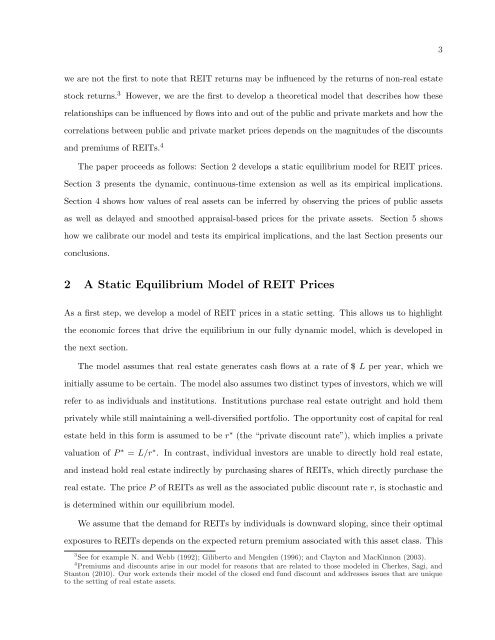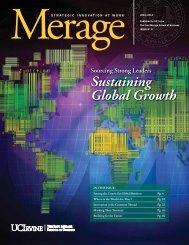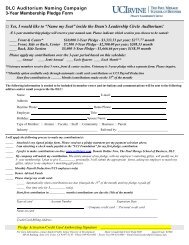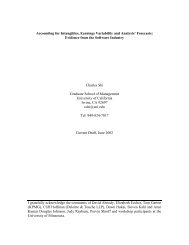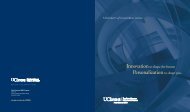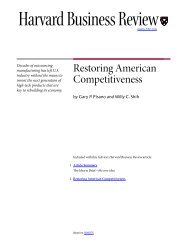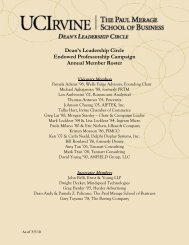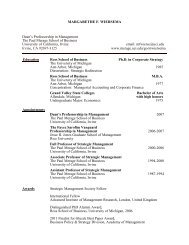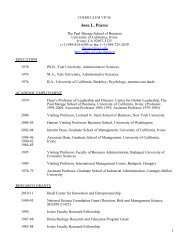View Carlson-Titman-Tiu Paper - The Paul Merage School of Business
View Carlson-Titman-Tiu Paper - The Paul Merage School of Business
View Carlson-Titman-Tiu Paper - The Paul Merage School of Business
Create successful ePaper yourself
Turn your PDF publications into a flip-book with our unique Google optimized e-Paper software.
we are not the first to note that REIT returns may be influenced by the returns <strong>of</strong> non-real estate<br />
stock returns. 3 However, we are the first to develop a theoretical model that describes how these<br />
relationships can be influenced by flows into and out <strong>of</strong> the public and private markets and how the<br />
correlations between public and private market prices depends on the magnitudes <strong>of</strong> the discounts<br />
and premiums <strong>of</strong> REITs. 4<br />
<strong>The</strong> paper proceeds as follows: Section 2 develops a static equilibrium model for REIT prices.<br />
Section 3 presents the dynamic, continuous-time extension as well as its empirical implications.<br />
Section 4 shows how values <strong>of</strong> real assets can be inferred by observing the prices <strong>of</strong> public assets<br />
as well as delayed and smoothed appraisal-based prices for the private assets. Section 5 shows<br />
how we calibrate our model and tests its empirical implications, and the last Section presents our<br />
conclusions.<br />
2 A Static Equilibrium Model <strong>of</strong> REIT Prices<br />
As a first step, we develop a model <strong>of</strong> REIT prices in a static setting. This allows us to highlight<br />
the economic forces that drive the equilibrium in our fully dynamic model, which is developed in<br />
the next section.<br />
<strong>The</strong> model assumes that real estate generates cash flows at a rate <strong>of</strong> L per year, which we<br />
initially assume to be certain. <strong>The</strong> model also assumes two distinct types <strong>of</strong> investors, which we will<br />
refer to as individuals and institutions. Institutions purchase real estate outright and hold them<br />
privately while still maintaining a well-diversified portfolio. <strong>The</strong> opportunity cost <strong>of</strong> capital for real<br />
estate held in this form is assumed to be r ∗ (the “private discount rate”), which implies a private<br />
valuation <strong>of</strong> P ∗ = L/r ∗ . In contrast, individual investors are unable to directly hold real estate,<br />
and instead hold real estate indirectly by purchasing shares <strong>of</strong> REITs, which directly purchase the<br />
real estate. <strong>The</strong> price P <strong>of</strong> REITs as well as the associated public discount rate r, is stochastic and<br />
is determined within our equilibrium model.<br />
We assume that the demand for REITs by individuals is downward sloping, since their optimal<br />
exposures to REITs depends on the expected return premium associated with this asset class. This<br />
3 See for example N. and Webb (1992); Giliberto and Mengden (1996); and Clayton and MacKinnon (2003).<br />
4 Premiums and discounts arise in our model for reasons that are related to those modeled in Cherkes, Sagi, and<br />
Stanton (2010). Our work extends their model <strong>of</strong> the closed end fund discount and addresses issues that are unique<br />
to the setting <strong>of</strong> real estate assets.<br />
3


